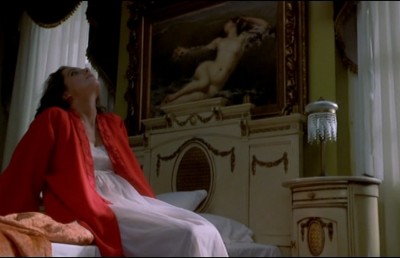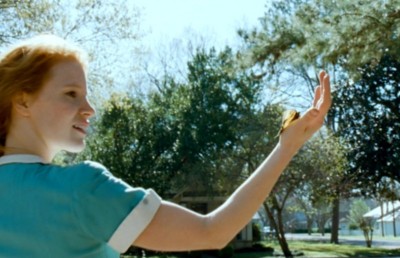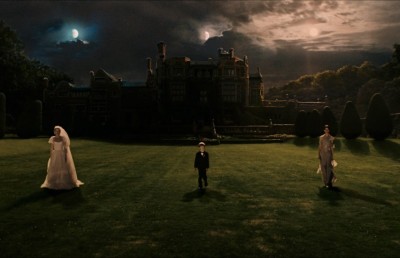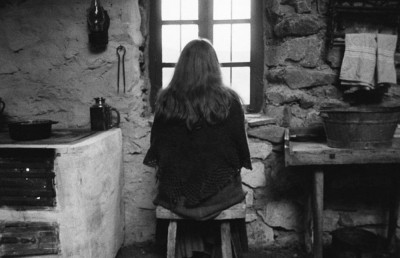The Turin Horse: A Numbers Game
Bela Tarr's Final Film
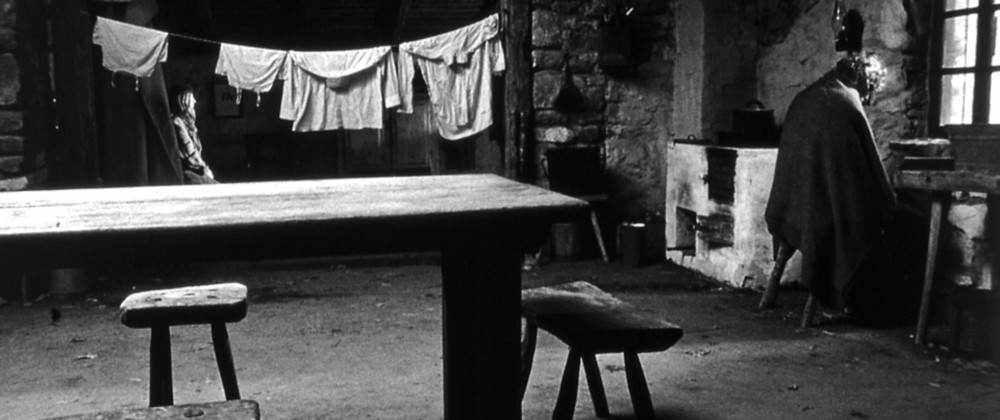
“Unlike in Andrei Tarkovsky’s movies, time in Béla’s movies is not metaphysical; time in Béla’s films is existential. It has to be endured.” [1]
The theatre where I saw The Turin Horse, Cinema du Parc (in Montreal) was playing concurrently with The Turin Horse in an adjoining theatre, Prometheus. I had a chuckle at how a theatre could be showing two films so vastly different. One hundred and forty-six minutes later I had a second chuckle at how two vastly different films could also have one major thing in common: both films ask one BIG thematic question (and neither film answers the question). Prometheus asks, “Who are we?” Who created us, and why? Why do our creators seem intent on destroying us? The Turin Horse asks, “Why do we bother to live on?” “What possesses us to drive on with our miserable lives?” Director Ridley Scott (of Prometheus) proposes the question from a theological angle, whereas Tarr asks from an Existentialist angle. Which may explain the film’s title and the reference to Friedrich Nietzsche (1844-1900), who is seen in some philosophical circles as a forerunner of 20th century Existentialism (or at least a strong influence on Jean-Paul Sartre). In the film’s opening, black titled scene the film’s random omniscient narrator recounts the supposed story of how Nietzsche, living in Turin, witnessed a man flogging his stubborn horse on the far side of the Piazza Carlo Alberto. Struck by compassion for the poor horse, Nietzsche ran to the horse’s defense. The incident caused enough of a disturbance that two policemen came to investigate. The incident occurred on January 3, 1889. A few short days after this incident the once brilliant man suffered a slow medical meltdown that eventually left him mentally incapacitated for the last ten or so years of his life, living under the care of first his mother until her death in 1887 and then his sister until his death in 1900. Was there a connection between the horse flogging and his mental descent into insanity? Like The Turin Horse, this story, whether true or not, asks a similar question: “What breaks a person?” “What makes a person turn from brilliant thinker to helpless child in such a short time?”
But Béla Tarr being Béla Tarr isn’t interested in Nietzsche’s psychic breakdown. The narrator wonders, “what happened to the horse?” This is the perfect example of the kind of mini-question that informs what Noel Carroll calls the classic “erotetic narrative”: in narrative films a scene will raise either a major or minor question, which will be answered in subsequent scene, the minor question often in the next scene and the major question at times not until the final scene. The narrator wonders about what happened to the horse, and the scene cuts to a horse. Perhaps not that horse but a horse, in a simply wondrous five minute long take (which is about the average shot length for the whole film) travelling with our protagonist potato farmer/cart driver named Ohlsdorfer (Janos Derzsi) leading his horse and cart through a blistering wind storm, one that will last most of the film’s narratively plotted six days. The horse may not literally be that horse, but it can be figuratively, as a link between Nietzsche’s existentialist dilemma and Tarr’s (filtered through his two principal characters, a male farmer and his adult daughter, played by Erike Bok, both of whom also appeared in Satantango and Man From London).
For the next two hours plus we watch these two people struggle to survive the wind storm amid an arid, isolated rural landscape. They live frugally. Much like the viewers, they don’t have much to go on. Their life consists of repetitive quotidian acts, followed through with numbing (and for us perhaps hypnotic) regularity. There is no joy or fun in these lives, just work, duty and subsistence. The man has a sleepy eye and a dead right arm. His daughter helps him dress for bed and work. She goes for water at their well to cook the two singular potatoes they eat every day. They go to the barn to feed the horse, or take him out to the fields to work (when the horse feels like it….it is old and sickly). They eat. He cuts wood. After eating he sits in front of the window staring out into the bleak landscape. She sits behind at the table, sewing or doing a chore. At times she takes a turn at the window. They light the kerosene lamps. This is their life. It is all they do. For the average viewer the film may feel like the equivalent of watching paint dry. Perhaps, but WHAT paint! Like David Hanley, in his tandem review in this issue, “The Turin Horse and the End of Civilization As We Know It”: I too was riveted and enthralled by Tarr’s visual and aural depiction of the lives of these two poor souls. The luminous black and white, the stately camera movements that sculpt the inside of the house into picturesque blocks of architectural density, like the slow dolly forward to the back of the man seated at the window. Or the liberating camera movement forward following the father or daughter from inside to outside through the front door, recalling John Ford’s similar treatment of the door separating the inner domestic and the outer wilderness in The Searchers.

Or the slow dolly back from the man at the window to the daughter facing the opposite way seated at the kitchen table. Although there is much repetition in their acts –for example we see them eating the same solitary boiled potato at least five times– there is always variety in how the acts are filmed, with the camera movement, angle, composition or lighting being different. I was also struck by how the film could be read as a variation on two numbers, a major motif, the number two, and a minor motif, the number six. I’ll conclude my analysis by a not very rigorous but hopefully enlightening breakdown of how these two numbers inform the formal and thematic structure of the film. I’ll begin with the formal.
The “Form” of Two: More than Just a NumberTwo colors, Black and white: Like most of Tarr’s recent work, The Turin Horse is filmed in glorious black and white, something which adds realism, poetry and formal beauty to the dreary narrative actions. Aside from describing the film stock the black and the white are two colors used by Tarr. The film begins in black, with the voice-over narration, and ends in darkness when the sun refuses to rise and the kerosene lamps don’t light. In between there are many fades to black and fades in from black, and the black often shares the frame with white in the chiaroscuro interiors. White is a color less used. Sometimes we see brightness trying to peek inside a window from the outside, but the most striking use of white is when the daughter hangs clothes on a clothes line and the camera dollies in to a white shirt which fills the frame in an embossed white.


Van Gogh’s The Potato Eaters, 1885, An Influence on the Lighting
Two sounds, Music and Wind: The only two sounds of note we hear in the film (not counting the smattering of dialogue lines) are the powerful wind noises caused by the perpetual storm and the dirge-like minimalist music (mainly strings and organ). These two sounds bounce off each other throughout the film, one rhythmically giving way to the other. I may be wrong but based on my single viewing I don’t think the two sounds ever overlap. The sound of the wind is louder when outside and tempered when the father and daughter enter the house.
Two Places, Inside/Outside: The rhythm of the film is also modulated by the way the two characters spend their time between the inside, their shanty home, and the inhospitable outside. Certain duties take them outside: fetching water, feeding the horse; others make them stay inside: sleeping, resting, cooking, eating. They seem just as miserable inside or outside, neither seeming like a reprieve or a moment that provides some fun or relaxation.

Two Characters, Father and Daughter: For the majority of the film these are the only two characters we see. They seem to tolerate each other rather than enjoy each other’s company. Yet they seem tied to each other as with an umbilical cord.
Two Intrusions into Their Routine: The life of this man and his daughter is rigidly predicated on the routines of their daily life. Without smile or fanfare, they eat, sleep, work, sit, rest. There are only two intrusions into this routine that snaps their mundane rhythm for a spell. The first is a visit from a “neighbor” who drops by to buy some palinka, an Hungarian fruit based brandy (though my guess during the film was that it was a potato based white alcohol). When the father asks the man why he didn’t go into town to buy the palinka this sets him off on a long, meandering, abstract monologue on how the town is “in ruins” and the world is going to pot, “everything is in ruin,” that ‘God does not exist.” In all honesty I can’t remember the details of his talk but it was decidedly existentialist. I like the hypothesis suggested by blogger Brandon of Brandon’s Memories that perhaps this man’s rant comes directly from Nietzsche. The man’s excessive loquaciousness stood in comic contrast to the father’s stone cold taciturn silence. The second intrusion is a cart full of noisy gypsies who stop at their well to steal water, an act which brings them both out to confront them, with the father threatening them with his axe.
Two Things they Imbibe and Eat: The simplicity of their lives is matched by their diet. All we ever see the daughter cook and the two eat is a single boiled potato. The father attacks the potato, ravaging it with his single good hand, and, never having the patience to wait until the skin cools, scalding his hand. The daughter by contrast eats her potato quietly and calmly. They never seem to finish the potato, and he always leave to sit by the window. And all they ever drink is the clear alcohol, palinka I imagine.
Two Horses: There are two horses in the narrative, one mentioned in the opening voice-over anecdote and never seen, the titular “Turin Horse” that triggered Nietzsche’s compassion, and the old, scrawny farm horse owned by the father and daughter. The farm horse seems to share the stubbornness of the Turin horse; and by extension, it should be noted that the grizzled, mustachioed farmer bears some resemblance to Nietzsche. There are also two long tracking shots featuring the farmer riding the horse and cart. Beyond these sets of two, the film is filled with two-shots, many featuring the father and daughter seated across from each other at the kitchen table, or across the space of the room, one in the background the other in the foreground, but also shots of two objects, like two plates and two glasses on the table, etc.


Father above and F. Nietzsche below….similarities?
The Number SixFor reasons that are not entirely obvious, the films’ temporal arc is structured around title cards denoting, “First Day,” “Second Day,” “Third Day,” “Fourth Day,” “Fifth Day,” and “Sixth Day.” The use of ‘days’ gives the film a sense of order, allowing for the scenes of readying for bed and rising to begin the day. Up until the final title card, each of the days were of the same approximate length, but the final sixth day is far shorter. It is morning yet the sun does not appear to rise, casting the father and daughter seated opposite each other in some darkness, alleviated only by a kerosene lamp. When the lamp also refuses to continue to light, total darkness sets in and the film concludes on this near apocalyptic note. Hints of such an event appeared earlier in the film; like the moment when both father and daughter stop what they are doing to look off screen and wonder, “What’s that?” There is no cut to what piqued their curiosity and nothing more is made of it, but the audience feels the hint of mystery, which is reintroduced in the conclusion. But why six days? Given the over-all sense of mystery and the noted hint of the apocalypse, perhaps Tarr is alluding to the Biblical notion of Creation. According to the Bible, it took God six days to create the world, and he rested on the seventh day, Sunday. Could Tarr be taking the Creation myth and turning it in reverse, with six days the time needed to bring the world to an end? Or as some reviewers have suggested, the end of cinema? And indeed, if this is, as Tarr has said in countless interviews, his final film, could it not be his way of saying the same: it is time to rest?
Endnotes
1 Fred Kelemen, DP of The Turin Horse, trans. By Phil Cooksey. “The Last Dance,” Sight & Sound. June 2012, Vol. 22 Issue 6, p39.



